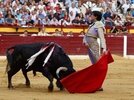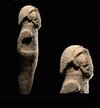First, as the saying goes, let's render unto Caesar the things that are Caesar's. The following article taps into some key ideas shared by Laura.
Mithraism has been lionized by generations of historians. In particular, Belgian historian Franz Cumont[1] who dominated the academic spheres relating to Mithraic studies for decades. In the following article, we propose a different perspective.
First and foremost, notice the popular belief, spread by Cumont and his ilk, according to which Roman Mithraism is the direct descendant of Persian Mazdeism seems unfounded:
In particular, Persian Mazdeism exhibits no sign of Mithraic temple or tauroctony or the system of seven initiatory grades that are the three main features of Roman Mithraism:
It bears to emphasize the repercussion of two above quotes. There is absolutely no clear genealogy between Mazdeism and Roman Mithraism. There is no evidence whatsoever of the latter before the first quarter of the first Century AD[4].
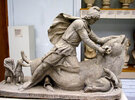
Mithra sacrificing the Bull. Sculpture CIMRM 593 dating back to the first quarter of the first century
Roman Mithraism seems to be the result of a vague melting pot between various traditions including the Cult of Cybele, which exhibits a very loose connections or what seems an alibi with Mithraic tauroctony:
So, the taurobolium as practiced in the Cult of Cybele was an innocuous bull chase. Predentius “repugnant rite”, i.e. the taurotoctony refers to a late (Roman) and radical transformation of the initial rite:
Indeed, a chief and exclusive feature of Roman Mithraism was the sacrifice of bull. It was practiced in Mithra temples (Mithraeum) all over the Roman Empire. Archeological evidence proves it. For example in the Caracala temple[7] there is still a sacrifice dwell, on top of it was the sacrificed bull and down the well was the initiate who was covered by the blood:
Not only Roman Mithraism practiced bull sacrifices but there is also several frescoes evoking human sacrifices. For example this fresco found in the Mithraeum of Santa Maria Capua Vetere[8]:
Modern scientists interpret these scenes as harmless depictions of initiation rites. But the suspicion raised by these frescos[9] was confirmed by the writings of ancient authors as well as evidence of human sacrifice at the back of the Sarrebourg mithraeum:
Created out of nothing after the assassination of Julius Caesar, Roman Mithraism elaborated a very detailed sacrificial scene of the bull that was its central symbol. Why?
Caesar’s emblem was the bull. For example the Tenth legion was the first legion levied personally by Caesar and was consistently his most trusted one[11]. Its emblem was the bull:
There were even coins (denarii) representing Caesar on one side and a bull on the other issued by the triumvarut (Antony, Lepidus, and Octavian) soon after Caesar’s assassination:
The strong attachment of Julius Caesar to the bull comes from the fact that Bovillae (Bull in Latin) was his home-town:
Actually, the assassins of Julius Caesar displayed a Phrygian cap when they fled the Senate:
Notice that Phrygia was a kingdom located at the center of Asia Minor on the Anatolian plateau[17], it was part of Persia where originated Mazdeism.
Were the Senators displaying a Phrygian cap trying to make a diversion – spreading a fake motive: the senators killed the tyrant to give back freedom to the people - and, at the same time, suggesting their ancestry from Mazdeism?
In any case, after the assassination of Caesar, the Phrygian cap was ostensibly integrated to the Mithraic iconography as part of the tauroctony.
In the tauroctony, Mithra uses specifically a dagger as shown in CIMRM593, the oldest known representation of the tauroctony. According to Manfred Clauss[18] this item belongs to the first quarter of the first century, just a few decades after Julius Caesar’s death:
Soon after the assassination, Marc Brutus was presented as the liberator of the people in the face of a tyrannical dictator. Coins were even minted representing him as a hero and prominently displaying a Phrygian cap and two daggers:
This coin shows that, at the time, the Phrygian cap and the daggers were two well-known symbols of Julius Caesar’s assassination.
Lots of tauroctony representations display Mithra not cutting the throat of the bull like in a usual sacrifice or a modern slaughter[21]. Instead Mithra is stabbing the Bull in the back ribs:
Julius Caesar was stabbed 23 times[22], but only one wound was lethal:
According to research, Mithraism originated in Rome and is the result of carefully planned invention by an unknown individual or a narrow group of founders:
To summarize our findings this far, we have Roman Mithraism that was invented out of nothing - after the assassination of Julius Caesar - and that displays specific symbols very reminiscent of the circumstances of Caesar’s death:
- Sacrifice of the bull -> the Bull was Caesar’s symbol
- Mithra wears a Phrygian cap -> the conspirators exhibited a Phrygian cap after the murder
- Mithra uses a dagger to kill the Bull -> the conspirators used daggers to kill Caesar
- Mithra stabbed the back ribs of the Bull -> it was a stab in the ribs that killed Caesar
- Mithraism originated in Rome -> Caesar was assassinated in the Senate of Rome
Coincidentally or not, the conspiracy to assassinate Julius Caesar began with a meeting between Cassius Longinus and his brother-in-law Marcus Brutus, Caesar’s adoptive son and the direct descendant of Brutus who chased the last king of Rome named Tarquin the superb (fifth century BC).[25]
The assassination of Julius Caesar lasted, at least, a few seconds:
In addition, during his altercation with Casca, Caesar caught Casca's arm and ran it through with his stylus[28]
At the time of Julius Caesar there were 900 senatorial seats[29]. So, the Senate was a rather large building. Caesar fought back and moved. Of all places, he ended at the foot of the statue of Pompey. Allegedly, Pompey was the one who introduced Mithraism to Rome[30].
According to this paper[31] Caesar last move was deliberate and was supposed to show his devotion to Mithra. But then the obvious question is: why didn’t Caesar proclaim his devotion earlier? I think this hypothesis is unlikely to be true.
Probably the last location of Julius Caesar was a coincidence. Maybe, it’s the opposite of what is suggested in the hypotheses quoted above: Caesar’s last move near Pompey’s statue a way to point out the true identity of his murderers.
Centuries later, The Terror (1793-1794) is the only historical period when wearing Phrygian caps was compulsory[32] (for public servants). The Terror, despite lasting only 10 months, resulted in the decapitation of the King and the killing of up 40,000 citizens[33] among which numerous clergymen.
On June 20, 1792 the revolutionaries invaded the Tuileries and arrested Louis XVI. The angry mob reached the king and handed him a Phrygian cap[34], Louis XVI, a little taken aback, seized it and capped it. The King was decapitated 6 months later.
Free masonry exhibits many similarities with Mithraism[35] [36] [37], too many to be coincidental, and there is also plenty of evidence of showing that free masonry played a major role in the French revolution[38] [39] [40] [41]
Coincidently or not, Franz Cumont - who was the originators of many unsubstantiated allegations romanticizing Mithraism and hiding its true nature - had very close links with freemasonry.
So many links, in fact, that a whole scientific paper[43] was dedicated to this topic. Cumont’s father and brother were freemason, Franz Cumont wrote no less than 28 letters to the great master of Belgium, and he sent three letters with the 3-points freemason signature to industrialist Raoult Warocqué, a freemason and Cumont’s dear friend.
Notice that Mithraism had a specific hierarchy composed by seven levels like the freemason French rite[44]. Oddly enough, the Sun was only the sixth level while the supreme level was occupied by Saturn:
Saturn is the god who devours his children[45] and also, in several traditions, Saturn is associated with Satan:
So much for Roman Mithraism and its alleged positive values as defended by Cumont.
The above quote mentions the winter solstice. Nowadays the 25th of December marks for Christians the birth of Jesus Christ, also known as Christmas. But it was not always the case:
Coincidentally or not, January 10th is the date when Julius Caesar crossed the Rubicon[47], The beginning of January is still Christmas for the Orthodox. On the other hand, December 25th is Mithra’s birth date and it’s the Christmas date for Catholics.
Is the assassination of Caesar, the distortion of Paul’s heritage[48], Charlemagne destroying the last pockets of Paleochristianity[49], the reformation and the French Revolution[50], ultimately serving the same goal?
Are we witnessing a long lasting attempt to eradicate moral values in general and the heritage of Julius Caesar embodied in Paleochristianity in particular?
Is it a 2000-year struggle between the people and the oligarchy, where the latter virtually wins all the time?
[1] Wikipedia contributors (2022) "Franz Cumont" Wikipedia
[2] Chalupa, Aleš (2016) “The origins of the roman cult of Mithras in the light of new evidence and interpretations: The current state of affairs” in Religio: revue pro religionistiku vol.24. 65-96
[3] Chalupa, 2016
[4] Clauss, Manfred, and Richard Gordon (2000) “The Roman Cult of Mithras: The God and His Mysteries” Edinburgh University Press
[5] McLynn, Neil “The Fourth-Century ‘Taurobolium’” Phoenix 50, no. 3/4 (1996): 312–30
[6] Tertullian Editors (2000) “The Tauroctony” Tertullian
[7] CIREVE Researchers (2019) ‘’Le culte de Mithra’’ CIREVE
[8] Mithraeum editors (2009) “Mitreo di Santa Maria Capua Vetere” Mithraeum
[9] Editors of Pompei in Pictures (2014) “Santa Maria Capua Vetere, Mithraeum’’ Pompei in Pictures
[10] Martin Vermaseren (1960) ‘’ Mithra: Ce Dieu Mystérieux.’’ Sequoia
[11] Wikipedia contributors "Legio X Equestris" Wikipedia
[12] Member of the college of moneyers of the year 42 BC
[13] David Woods (2013) “Regulus, Caesar, and a Brutish Bull” Schweizerische Numismatische Rundschau 92
[14] Stefan Weinstock (1971) “Divus Julius” Clarendon Press
[15] Stefano Carpani (2022) “Individuation and Liberty in a Globalized World” Taylor & Francis
[16] M. Heydari-Malayeri (2003) ‘’The History of Marianne's Cap’’ Historia, N 679, page 22
[17] Ibid
[18] Clauss, Manfred, and Richard Gordon (2000) “The Roman Cult of Mithras: The God and His Mysteries” Edinburgh University Press
[19] Suetonius “The Life of Julius Caesar” 82.2 translated by J. C. Rolfe
[20] Nora McGreevy (2022) “A Roman Coin Minted as a Salute to Julius Caesar’s Assassination Is Up for Auction smithsonianmag
[21] Maurice A. Alexander (2022) “Home Slaughtering and Processing of Beef” University of Missouri
[22] National Geographic editors (2022) “Mar 15, 44 BC: Julius Caesar Assassinated” National Geographic
[23] Andrew Glass (2016) “Julius Caesar is assassinated by Roman senators: March 15, 44 B.C.” Politico
[24] Ostia is only 24 km (15 mi) from Rome
[25] L’Histoire editors (1988) ‘’Rome : la chute de la royauté’’ L’Histoire n°108
[26] Wikipedia contributors, "Assassination of Julius Caesar," Wikipedia
[27] Ibid
[28] Suetonius “The Life of Julius Caesar”, 82.2 translated by J. C. Rolfe
[29] PBS editors (2006) ‘’The Roman Empire’’ PBS
[30] Plutarch. ‘’Plutarch's Lives’’ translation by Bernadotte Perrin. Harvard University Press. 1917. 5.
[31] Роман Аргашоков (2021) “Julius Caesar, Octavian Augustus and the God Mithras” Academia
[32] Marie-Alice Leroux (2022) ‘’Le bonnet phrygien, origine du couvre-chef rouge symbole de liberté’’ BMB
[33] PBS Editors (2006) “Reign of Terror: 1793-1794” PBS
[34] Mme de Sabran (2018) ‘’Le bonnet phrygien de la Révolution française’’ Marie-Antoinette, Sa vie, son siècle
[35] Gaby Simeoni (2021) From Mithraism to Freemasonry. A history of ideas
[36] H. L. Haywood et al. (2020) “Freemasonry, Mithraism and the Ancient Mysteries” Lamp of Trismegistus
[37] Sundruid (2020) “The Mithraism — Freemasonry Connection” Medium
[38] Augustin Barruel (1797) “Memoirs, Illustrating the History of Jacobinism: A Translation from the French of the Abbé Barruel” published by the author
[39] David Harrison (2015) “Freemasonry and the French Revolution” Dr. David Harrison
[40] Wondrium editors (2020) “Benjamin Franklin’s Masonic Connection and Jacobin Reign of Terror” Wondrium
[41] John Robison (1798) “Proofs of a Conspiracy Against All the Religions and Governments of Europe, Carried on in the Secret Meetings of Free Masons, Illuminati, and Reading Societies”
[42] Éric Saunier (2022) ‘’Les francs-maçons et la Révolution française’’ French National Library
[43] Corinne Bonnet (2008) "Un Cumont peut en cacher un autre… À propos de l’appartenance de Franz Cumont à la franc-maçonnerie’’ Varia
[44] David Harrison (2020) “The Rite of Seven Degrees” Lewis Masonic
[45] Donald L. Wasson (2015) “Saturn” Worldhistory
[46] Cisco Wheeler (2009) “Behold a White Horse” Xulon Press
[47] National Geographic Society (2022) “Jan 10, 49 BC: Caesar Crosses the Rubicon” National Geographic
[48] Laura Knight-Jadczyk (2021) “From Paul to Mark: PaleoChristianity” Red Pill Press
[49] Pierre Lescaudron (2022) “Comets, Viruses and Evolutionary Leaps” chapter 20
[50] Pierre Lescaudron (2010) ‘’Aux larmes Citoyens !’’ Sott.net
[51] When Caesar saw that he was beset on every side by drawn daggers, he muffled his head in his robe
Suetonius “The Life of Julius Caesar” 82.2 translated by J. C. Rolfe
Julius Caesar and Mithraism
Mithraism has been lionized by generations of historians. In particular, Belgian historian Franz Cumont[1] who dominated the academic spheres relating to Mithraic studies for decades. In the following article, we propose a different perspective.
From Persian Mazdeism to Roman Mithraism?
First and foremost, notice the popular belief, spread by Cumont and his ilk, according to which Roman Mithraism is the direct descendant of Persian Mazdeism seems unfounded:
Wikander demonstrated that many conclusions regarding the beginnings of the cult and endorsed by Cumont and his followers were plainly arbitrary and rejected the view seeing the direct and uncomplicated descent of the Roman cult of Mithras from a Persian predecessor as completely unfounded. [2]
In particular, Persian Mazdeism exhibits no sign of Mithraic temple or tauroctony or the system of seven initiatory grades that are the three main features of Roman Mithraism:
It seems that certain features which characterize the Mithras cult in the West, e.g. the mithraeum, tauroctony, or the system of seven initiatory grades, have no clear parallels in the earlier Eastern evidence and probably represent a new form of Mithras worship, which is not identifiable in archaeological material until the last quarter of the 1st century CE. All efforts to identify these features or their rudimentary forms in statu nascendi in material of the Persian or Asia Minor provenance remain, after intensive scholarly discussion, futile.[3]
It bears to emphasize the repercussion of two above quotes. There is absolutely no clear genealogy between Mazdeism and Roman Mithraism. There is no evidence whatsoever of the latter before the first quarter of the first Century AD[4].
The tauroctony (Bull sacrifice)

Mithra sacrificing the Bull. Sculpture CIMRM 593 dating back to the first quarter of the first century
Roman Mithraism seems to be the result of a vague melting pot between various traditions including the Cult of Cybele, which exhibits a very loose connections or what seems an alibi with Mithraic tauroctony:
Whereas Franz Cumont, had assigned the origins of Prudentius' "repugnant rite" to the dark prehistory of the Phrygian cult of Cybele, independent but complementary studies of the epigraphic evidence by R. Duthoy (1969) and J. B. Rutter (1968) demonstrated that in its earliest attested form the taurobolium was some sort of bull chase, and that the vast majority of surviving inscriptions, from the second and third centuries A.D., refer to what had become essentially a conventional bull sacrifice. Prudentius' description, concluded both, applies only to a final transformation in the character of the rite, and is to be associated primarily with the collection of fourth-century inscriptions from Rome commemorating taurobolia conducted in the sanctuary of the Phrygianum on the Vatican[5].
So, the taurobolium as practiced in the Cult of Cybele was an innocuous bull chase. Predentius “repugnant rite”, i.e. the taurotoctony refers to a late (Roman) and radical transformation of the initial rite:
In its latest form, recorded by Prudentius, it involved standing in a pit under a metal grill, on which a bull was killed, thereby experiencing a shower of blood.[6]
Indeed, a chief and exclusive feature of Roman Mithraism was the sacrifice of bull. It was practiced in Mithra temples (Mithraeum) all over the Roman Empire. Archeological evidence proves it. For example in the Caracala temple[7] there is still a sacrifice dwell, on top of it was the sacrificed bull and down the well was the initiate who was covered by the blood:
Human sacrifices
Not only Roman Mithraism practiced bull sacrifices but there is also several frescoes evoking human sacrifices. For example this fresco found in the Mithraeum of Santa Maria Capua Vetere[8]:
Modern scientists interpret these scenes as harmless depictions of initiation rites. But the suspicion raised by these frescos[9] was confirmed by the writings of ancient authors as well as evidence of human sacrifice at the back of the Sarrebourg mithraeum:
Some findings seem want to confirm that [the human sacrifice]. Thus, Lampridius, in his biography of the emperor Commodus (180-192) says that he would have defiled the mysteries of Mithras by an assassination.
Two centuries later the Church historian, Socrates (ca. 400 AD.), writes that in Alexandria, during the celebration of the mysteries of Mithras, the Greeks 'killed men'.
What was in Antiquity imputed to the emperor Commodus, was recently reproached to the Emperor Julian by the scholar Hungarian M. Massalsky […]
In Sarrebourg, in the depths of the Mithraeum, and on the broken relief of Mithra tauroctony lay the skeleton of a man from thirty to forty years old. He was lying face down on the ground with his wrists tied together with an iron chain.[10]
Created out of nothing after the assassination of Julius Caesar, Roman Mithraism elaborated a very detailed sacrificial scene of the bull that was its central symbol. Why?
Julius Caesar and the Bull
Caesar’s emblem was the bull. For example the Tenth legion was the first legion levied personally by Caesar and was consistently his most trusted one[11]. Its emblem was the bull:
There were even coins (denarii) representing Caesar on one side and a bull on the other issued by the triumvarut (Antony, Lepidus, and Octavian) soon after Caesar’s assassination:
A small group [of coins] depicted the head Julius Caesar on the obverse instead, since the triumvirs claimed the avenging of his assassination as one of their main aims.[…] Finally, Regulus[12] issued a denarius pairing an obverse depicting the laureate head of Caesar between a laurel branch and a caduceus with a reverse depicting a bull galloping to the right[13]
The strong attachment of Julius Caesar to the bull comes from the fact that Bovillae (Bull in Latin) was his home-town:
with them the cults of the Iulii [Julius Caesar’s family], though not at Alba, which was not rebuilt, but at Bovillae […] It will be seen that Caesar was attached to both Alba and Bovillae, but that the family had stronger roots in Bovillae than in Alba. […] Bovillae was said to have been founded on the spot where the bull was caught […] This story served a twofold purpose: it explained the name of Bovillae as derived from bos [bull in latin] […] this was the bull of Bovillae again in a new role, and moreover, that this same bull appeared later on the standard of Caesar’s Legions it is important only in so far as it shows Caesar’s attachment to his home-town and its symbol. He may have intended to make the bull of Bovillae as popular as the she-wolf of Rome[14]
The Phrygian cap
The sacrifice of the Bull was created by Roman Mithraism after the assassination after Julius Caesar. The same applies to the Phrygian cap that, until the assassination of Julius Caesar, was worn by freed slaves:Following the assassination of Julius Caesar in 44 BC, Brutus and his co-conspirators instrumentalized this symbolism of the pileus [Phrygian cap] to signify the end of Caesar's dictatorship and a return to the (Roman) republican system[15]
Actually, the assassins of Julius Caesar displayed a Phrygian cap when they fled the Senate:
After assassinating Julius Caesar (44 B.C.), the conspirators paraded in the streets, raising a Phrygian cap at the top of a spade. [16]
Notice that Phrygia was a kingdom located at the center of Asia Minor on the Anatolian plateau[17], it was part of Persia where originated Mazdeism.
Were the Senators displaying a Phrygian cap trying to make a diversion – spreading a fake motive: the senators killed the tyrant to give back freedom to the people - and, at the same time, suggesting their ancestry from Mazdeism?
In any case, after the assassination of Caesar, the Phrygian cap was ostensibly integrated to the Mithraic iconography as part of the tauroctony.
The dagger
In the tauroctony, Mithra uses specifically a dagger as shown in CIMRM593, the oldest known representation of the tauroctony. According to Manfred Clauss[18] this item belongs to the first quarter of the first century, just a few decades after Julius Caesar’s death:
[Caesar] was stabbed with three and twenty wounds, uttering not a word, but merely a groan at the first stroke[19]
Soon after the assassination, Marc Brutus was presented as the liberator of the people in the face of a tyrannical dictator. Coins were even minted representing him as a hero and prominently displaying a Phrygian cap and two daggers:
Known as the “Eid Mar” or the “Ides of March,” the coin bears a heroic portrait of Brutus with the inscription BRVT IMP, which casts him as a military victor […]On the reverse, the coin features two daggers—thought to represent Brutus and his co-conspirator, Gaius Cassius—and a Phrygian cap[20]
This coin shows that, at the time, the Phrygian cap and the daggers were two well-known symbols of Julius Caesar’s assassination.
The location of the stab
Lots of tauroctony representations display Mithra not cutting the throat of the bull like in a usual sacrifice or a modern slaughter[21]. Instead Mithra is stabbing the Bull in the back ribs:
Julius Caesar was stabbed 23 times[22], but only one wound was lethal:
Suetonius relates that a physician who performed an autopsy on Caesar established that only one wound (the second one to his ribs) had been fatal.[23]
Location of the genesis of Mithraism
According to research, Mithraism originated in Rome and is the result of carefully planned invention by an unknown individual or a narrow group of founders:
The Roman Cult of Mithras is not conceptualized as a product of long-lasting and spontaneous transformation, but as the consequence of a short and carefully planned invention by an unknown individual or a narrow group of founders […] The Roman cult of Mithras originated either in Rome or Ostia[24] and diffused at a later stage from Italy into other, more distant, Roman provinces
Coincidences?
To summarize our findings this far, we have Roman Mithraism that was invented out of nothing - after the assassination of Julius Caesar - and that displays specific symbols very reminiscent of the circumstances of Caesar’s death:
- Sacrifice of the bull -> the Bull was Caesar’s symbol
- Mithra wears a Phrygian cap -> the conspirators exhibited a Phrygian cap after the murder
- Mithra uses a dagger to kill the Bull -> the conspirators used daggers to kill Caesar
- Mithra stabbed the back ribs of the Bull -> it was a stab in the ribs that killed Caesar
- Mithraism originated in Rome -> Caesar was assassinated in the Senate of Rome
The assassination of Julius Caesar
Coincidentally or not, the conspiracy to assassinate Julius Caesar began with a meeting between Cassius Longinus and his brother-in-law Marcus Brutus, Caesar’s adoptive son and the direct descendant of Brutus who chased the last king of Rome named Tarquin the superb (fifth century BC).[25]
The two agreed that they should assassinate Caesar to prevent him from becoming king of the Romans. Notice that on several occasion one tried to make Caesar a King, each time Caesar refused sternly. Did someone try to force Caesar to become King in order to manufacture a motive for the assassination?
The second incident occurred in 44 BC. One day in January, the tribunes Gaius Epidius Marullus and Lucius Caesetius Flavus discovered a diadem on the head of the statue of Caesar on the Rostra in the Roman Forum. According to Suetonius, the tribunes ordered that the wreath be removed as it was a symbol of Jupiter and royalty. Nobody knew who had placed the diadem, but Caesar suspected that the tribunes had arranged for it to appear so that they could have the honour of removing it. Matters escalated shortly after on the 26th, when Caesar was riding on horseback to Rome on the Appian Way. A few members of the crowd greeted him as rex ("king"), to which Caesar replied, "I am not king, but Caesar"[…]
The third incident took place at the festival of the Lupercalia, on 15 February 44 BC. Mark Antony, who had been elected co-consul with Caesar, climbed onto the Rostra and placed a diadem on Caesar's head, saying "The People give this to you through me", while a few members of the crowd applauded, most responded with silence. Caesar removed the diadem from his head; Antony again placed it on him, only to get the same response from the crowd. Finally, Caesar put it aside to use as a sacrifice to Jupiter Optimus Maximus. "Jupiter alone of the Romans is king," Caesar said, which received an enthusiastic response from the crowd […]
According to Suetonius, Caesar's assassination ultimately occurred primarily due to concerns that he wished to crown himself the king of Rome.[26]
The assassination of Julius Caesar lasted, at least, a few seconds:
Cimber grabbed Caesar's shoulders and pulled down Caesar's toga. Caesar then cried to Cimber, "Why, this is violence!" At the same time, Casca produced his dagger and made a glancing thrust at the dictator's neck. Caesar turned around quickly and caught Casca by the arm. According to Plutarch, he said in Latin, "Casca, you villain, what are you doing?" Casca, frightened, shouted simultaneously "Brother! Help me!". Though Caesar was able to violently throw Casca away, Gaius Servilius Casca stabbed him in the side. Within moments, Caesar was attacked from all directions, with Cassius, slashing Caesar's face, Bucilianus stabbing at the back and Decimus slicing his thigh. Caesar attempted to fight back, but tripped and fell; the men continued stabbing him as he lay defenseless on the lower steps of the portico.[27]
In addition, during his altercation with Casca, Caesar caught Casca's arm and ran it through with his stylus[28]
At the time of Julius Caesar there were 900 senatorial seats[29]. So, the Senate was a rather large building. Caesar fought back and moved. Of all places, he ended at the foot of the statue of Pompey. Allegedly, Pompey was the one who introduced Mithraism to Rome[30].
According to this paper[31] Caesar last move was deliberate and was supposed to show his devotion to Mithra. But then the obvious question is: why didn’t Caesar proclaim his devotion earlier? I think this hypothesis is unlikely to be true.
Probably the last location of Julius Caesar was a coincidence. Maybe, it’s the opposite of what is suggested in the hypotheses quoted above: Caesar’s last move near Pompey’s statue a way to point out the true identity of his murderers.
Mithraism, Freemasonry and the French Revolution
Centuries later, The Terror (1793-1794) is the only historical period when wearing Phrygian caps was compulsory[32] (for public servants). The Terror, despite lasting only 10 months, resulted in the decapitation of the King and the killing of up 40,000 citizens[33] among which numerous clergymen.
On June 20, 1792 the revolutionaries invaded the Tuileries and arrested Louis XVI. The angry mob reached the king and handed him a Phrygian cap[34], Louis XVI, a little taken aback, seized it and capped it. The King was decapitated 6 months later.
Free masonry exhibits many similarities with Mithraism[35] [36] [37], too many to be coincidental, and there is also plenty of evidence of showing that free masonry played a major role in the French revolution[38] [39] [40] [41]
With this same regime, it was not impossible to organize lodges of brigands in France and to distribute the roles of soldiers and even executioners of the Revolution.
- Abbot Augustin de Barruel[42]
Coincidently or not, Franz Cumont - who was the originators of many unsubstantiated allegations romanticizing Mithraism and hiding its true nature - had very close links with freemasonry.
So many links, in fact, that a whole scientific paper[43] was dedicated to this topic. Cumont’s father and brother were freemason, Franz Cumont wrote no less than 28 letters to the great master of Belgium, and he sent three letters with the 3-points freemason signature to industrialist Raoult Warocqué, a freemason and Cumont’s dear friend.
Mithraism and Christianity
Notice that Mithraism had a specific hierarchy composed by seven levels like the freemason French rite[44]. Oddly enough, the Sun was only the sixth level while the supreme level was occupied by Saturn:
Saturn is the god who devours his children[45] and also, in several traditions, Saturn is associated with Satan:
In the practice of cosmic and planetary magic, the Babylonians knew that Saturn represented Satan. Saturn/Satan was known as the god of the hidden counsels, the hidden one. […] In dedication to Satan the Saturday Sabbalh is the day set aside to honor Saturn. In Egypt there was a festival called the feast of Saturn, this pagan ritual was celebrated at the winter Solstice.[46]
So much for Roman Mithraism and its alleged positive values as defended by Cumont.
The above quote mentions the winter solstice. Nowadays the 25th of December marks for Christians the birth of Jesus Christ, also known as Christmas. But it was not always the case:
The first Christians did not celebrate December 25 and were unaware of Christ's birthday. Saint Mark's Gospel, considered as the oldest, does not speak about the life of Christ, and the only two Gospels which evoke his birth, those of Saint Luke and Saint Matthew, never give a date for the Nativity. […]
The first mention of the Christmas celebration goes back to the second century A.D., to Clement of Alexandria who, evoking the followers of the theologian Basilides, informs us that they celebrated Christ's baptism on January 6 or 10.
Coincidentally or not, January 10th is the date when Julius Caesar crossed the Rubicon[47], The beginning of January is still Christmas for the Orthodox. On the other hand, December 25th is Mithra’s birth date and it’s the Christmas date for Catholics.
Conclusion
Is the assassination of Caesar, the distortion of Paul’s heritage[48], Charlemagne destroying the last pockets of Paleochristianity[49], the reformation and the French Revolution[50], ultimately serving the same goal?
Are we witnessing a long lasting attempt to eradicate moral values in general and the heritage of Julius Caesar embodied in Paleochristianity in particular?
Is it a 2000-year struggle between the people and the oligarchy, where the latter virtually wins all the time?
[1] Wikipedia contributors (2022) "Franz Cumont" Wikipedia
[2] Chalupa, Aleš (2016) “The origins of the roman cult of Mithras in the light of new evidence and interpretations: The current state of affairs” in Religio: revue pro religionistiku vol.24. 65-96
[3] Chalupa, 2016
[4] Clauss, Manfred, and Richard Gordon (2000) “The Roman Cult of Mithras: The God and His Mysteries” Edinburgh University Press
[5] McLynn, Neil “The Fourth-Century ‘Taurobolium’” Phoenix 50, no. 3/4 (1996): 312–30
[6] Tertullian Editors (2000) “The Tauroctony” Tertullian
[7] CIREVE Researchers (2019) ‘’Le culte de Mithra’’ CIREVE
[8] Mithraeum editors (2009) “Mitreo di Santa Maria Capua Vetere” Mithraeum
[9] Editors of Pompei in Pictures (2014) “Santa Maria Capua Vetere, Mithraeum’’ Pompei in Pictures
[10] Martin Vermaseren (1960) ‘’ Mithra: Ce Dieu Mystérieux.’’ Sequoia
[11] Wikipedia contributors "Legio X Equestris" Wikipedia
[12] Member of the college of moneyers of the year 42 BC
[13] David Woods (2013) “Regulus, Caesar, and a Brutish Bull” Schweizerische Numismatische Rundschau 92
[14] Stefan Weinstock (1971) “Divus Julius” Clarendon Press
[15] Stefano Carpani (2022) “Individuation and Liberty in a Globalized World” Taylor & Francis
[16] M. Heydari-Malayeri (2003) ‘’The History of Marianne's Cap’’ Historia, N 679, page 22
[17] Ibid
[18] Clauss, Manfred, and Richard Gordon (2000) “The Roman Cult of Mithras: The God and His Mysteries” Edinburgh University Press
[19] Suetonius “The Life of Julius Caesar” 82.2 translated by J. C. Rolfe
[20] Nora McGreevy (2022) “A Roman Coin Minted as a Salute to Julius Caesar’s Assassination Is Up for Auction smithsonianmag
[21] Maurice A. Alexander (2022) “Home Slaughtering and Processing of Beef” University of Missouri
[22] National Geographic editors (2022) “Mar 15, 44 BC: Julius Caesar Assassinated” National Geographic
[23] Andrew Glass (2016) “Julius Caesar is assassinated by Roman senators: March 15, 44 B.C.” Politico
[24] Ostia is only 24 km (15 mi) from Rome
[25] L’Histoire editors (1988) ‘’Rome : la chute de la royauté’’ L’Histoire n°108
[26] Wikipedia contributors, "Assassination of Julius Caesar," Wikipedia
[27] Ibid
[28] Suetonius “The Life of Julius Caesar”, 82.2 translated by J. C. Rolfe
[29] PBS editors (2006) ‘’The Roman Empire’’ PBS
[30] Plutarch. ‘’Plutarch's Lives’’ translation by Bernadotte Perrin. Harvard University Press. 1917. 5.
[31] Роман Аргашоков (2021) “Julius Caesar, Octavian Augustus and the God Mithras” Academia
[32] Marie-Alice Leroux (2022) ‘’Le bonnet phrygien, origine du couvre-chef rouge symbole de liberté’’ BMB
[33] PBS Editors (2006) “Reign of Terror: 1793-1794” PBS
[34] Mme de Sabran (2018) ‘’Le bonnet phrygien de la Révolution française’’ Marie-Antoinette, Sa vie, son siècle
[35] Gaby Simeoni (2021) From Mithraism to Freemasonry. A history of ideas
[36] H. L. Haywood et al. (2020) “Freemasonry, Mithraism and the Ancient Mysteries” Lamp of Trismegistus
[37] Sundruid (2020) “The Mithraism — Freemasonry Connection” Medium
[38] Augustin Barruel (1797) “Memoirs, Illustrating the History of Jacobinism: A Translation from the French of the Abbé Barruel” published by the author
[39] David Harrison (2015) “Freemasonry and the French Revolution” Dr. David Harrison
[40] Wondrium editors (2020) “Benjamin Franklin’s Masonic Connection and Jacobin Reign of Terror” Wondrium
[41] John Robison (1798) “Proofs of a Conspiracy Against All the Religions and Governments of Europe, Carried on in the Secret Meetings of Free Masons, Illuminati, and Reading Societies”
[42] Éric Saunier (2022) ‘’Les francs-maçons et la Révolution française’’ French National Library
[43] Corinne Bonnet (2008) "Un Cumont peut en cacher un autre… À propos de l’appartenance de Franz Cumont à la franc-maçonnerie’’ Varia
[44] David Harrison (2020) “The Rite of Seven Degrees” Lewis Masonic
[45] Donald L. Wasson (2015) “Saturn” Worldhistory
[46] Cisco Wheeler (2009) “Behold a White Horse” Xulon Press
[47] National Geographic Society (2022) “Jan 10, 49 BC: Caesar Crosses the Rubicon” National Geographic
[48] Laura Knight-Jadczyk (2021) “From Paul to Mark: PaleoChristianity” Red Pill Press
[49] Pierre Lescaudron (2022) “Comets, Viruses and Evolutionary Leaps” chapter 20
[50] Pierre Lescaudron (2010) ‘’Aux larmes Citoyens !’’ Sott.net
[51] When Caesar saw that he was beset on every side by drawn daggers, he muffled his head in his robe
Suetonius “The Life of Julius Caesar” 82.2 translated by J. C. Rolfe
Attachments
Last edited by a moderator:

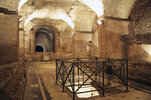
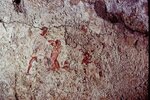
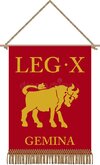

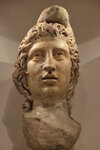

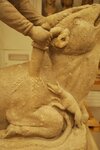
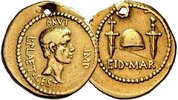
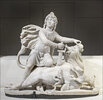
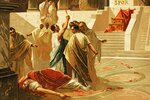

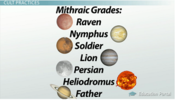
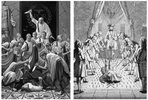
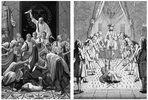
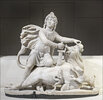


 .
.
